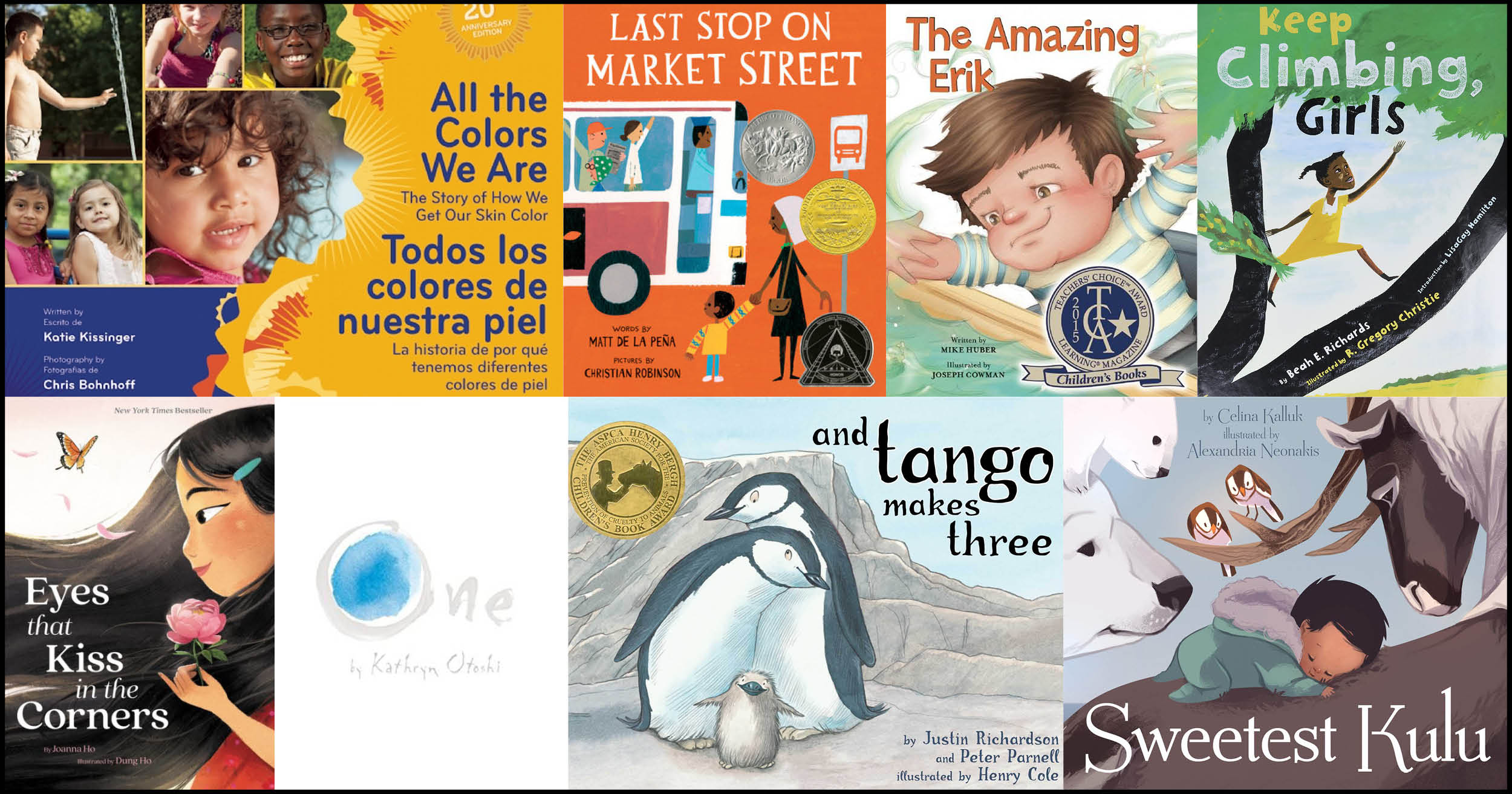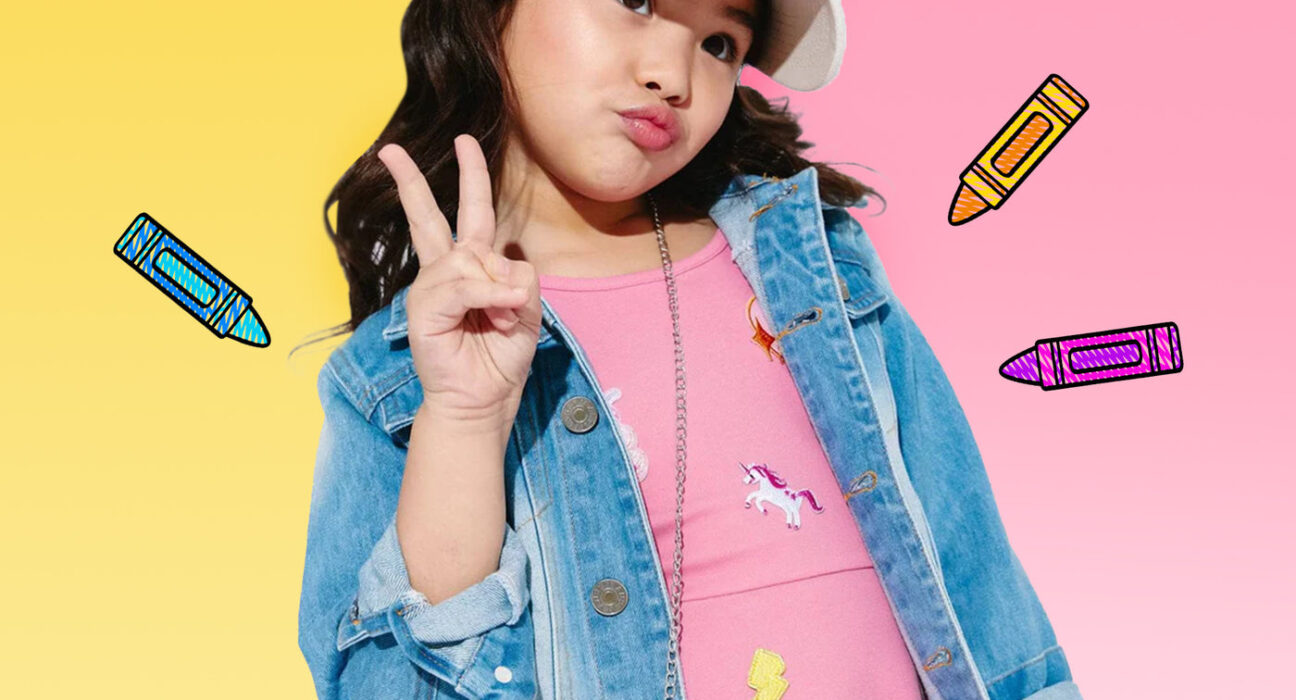Dressing kids can be fun and challenging. Parents often wonder how to choose the right clothes.
Understanding kids’ fashion and color theory can make this easier. This guide will help parents navigate the colorful world of children’s clothing. Fashion is not just about style; it’s also about how colors affect mood and expression. Bright colors can energize, while softer tones can calm.
Knowing how to mix and match these colors can boost creativity and confidence in kids. Parents will learn how to pick outfits that reflect their child’s personality. By using this knowledge, dressing your child can become a joyful experience. Get ready to explore kids’ fashion and color theory together!
Introduction To Kids Fashion
Kids fashion is more than just clothing. It reflects personality and creativity. Parents play a key role in guiding choices. Understanding kids’ fashion helps in making better decisions. Color choices are also important. They can affect mood and confidence. Let’s explore why fashion matters for kids.
Why Fashion Matters For Kids
Fashion shapes how kids express themselves. It boosts their confidence and self-image. Wearing clothes they like makes them feel good. Fashion can also influence social interactions. Kids who dress well often feel accepted by their peers.
Clothes can spark creativity and imagination. Bright colors and fun patterns inspire play. Kids learn to make choices through fashion. They develop a sense of style over time. This helps them grow into confident individuals.
Setting The Stage For Colorful Choices
Colors play a big role in kids’ fashion. They can express feelings and moods. Bright colors like red and yellow bring energy. Soft colors like blue and green offer calmness. Understanding color theory helps parents choose wisely.
Combining colors can create fun outfits. Patterns can add excitement to any look. Encourage kids to explore different colors. Let them pick outfits that reflect their personality. This promotes independence and self-expression.
Color Basics In Fashion
Understanding color is key in kids’ fashion. Colors can express emotions and personality. Choosing the right colors can make outfits more appealing. Parents can guide their kids in making stylish choices.
Primary Colors In Children’s Wear
Primary colors are the building blocks of all other colors. They are red, blue, and yellow. These colors are bright and bold. They grab attention easily. Here’s how to use primary colors in children’s wear:
- Red: Great for energetic outfits.
- Blue: Ideal for calm and cool styles.
- Yellow: Perfect for cheerful and sunny looks.
Outfits using primary colors stand out. They are easy to mix with other colors. Kids love these colors because they are fun.
Mixing And Matching: Secondary And Tertiary Hues
Secondary colors come from mixing primary colors. These are green, orange, and purple. Tertiary colors are made by mixing primary and secondary colors. They add variety and depth to outfits.
| Color Type | Color | Mixing Method |
|---|---|---|
| Secondary | Green | Blue + Yellow |
| Secondary | Orange | Red + Yellow |
| Secondary | Purple | Red + Blue |
| Tertiary | Red-Orange | Red + Orange |
| Tertiary | Yellow-Green | Yellow + Green |
Mixing these colors creates unique styles. It helps kids express their individuality. Encourage kids to experiment with their outfits. Let them combine colors they love.
Bright colors can be paired with neutral tones. This balance keeps outfits stylish and fun. For example, pair a vibrant orange shirt with beige pants. This creates an eye-catching look.
Understanding color theory helps parents choose the best outfits. It creates a fun fashion experience for children.
Color Psychology For Young Minds
Colors play a big role in how kids feel. Every color can spark different emotions. Parents can use this knowledge to choose the right outfits for their children. Understanding color psychology helps create a positive mood. It also helps kids express their personalities.
Emotional Impact Of Colors
Colors affect our emotions in many ways. Bright colors like yellow and orange bring joy. They can make kids feel happy and energetic. On the other hand, blue has a calming effect. It can help children relax and feel safe.
Red grabs attention. It can make kids feel excited. Too much red may lead to overstimulation. Green is linked to nature. It promotes balance and harmony, making it a good choice for everyday wear.
Choosing Colors For Different Moods
Selecting colors based on mood is smart. For a cheerful day, use bright colors. For quiet moments, opt for soft shades. If your child feels shy, choose colors that boost confidence.
Dress them in bold colors for special occasions. Use pastels for calm times like reading or napping. Understanding these choices can help children feel their best.
Seasonal Color Selection
Choosing colors for kids’ fashion can be fun. Each season brings different moods and feelings. Colors can reflect these changes. Parents can use seasonal color selection to create fresh outfits. This guide helps you choose the right colors for your child’s wardrobe.
Bright And Fresh: Spring And Summer
Spring and summer are all about brightness. Think of blooming flowers and sunny days. Colors like pastel pinks, light blues, and sunny yellows shine during this time. These colors create a cheerful vibe.
Light greens and soft purples also work well. They bring a sense of nature and joy. Choose breathable fabrics in these colors. This keeps kids comfortable while looking stylish.
Warm And Cozy: Fall And Winter
Fall and winter call for warm tones. Rich oranges, deep reds, and earthy browns fit perfectly. These colors reflect the beauty of changing leaves and cozy nights.
For winter, consider dark blues, grays, and festive greens. These colors create a warm atmosphere. Layering is key during these seasons. Choose thicker fabrics in these shades for comfort and warmth.
Age-appropriate Color Choices
Choosing the right colors for kids’ clothing is essential. Colors can affect mood and behavior. Parents should consider age-appropriate color choices. Each age group has different needs and preferences. Understanding these can help make fashion fun.
Infants And Toddlers: Soft Pastels
Infants and toddlers thrive in soft pastel colors. Light shades like baby blue, soft pink, and mint green are soothing. These colors create a calm atmosphere. They are gentle on the eyes. Pastels are also versatile and easy to mix.
Soft colors match well with many patterns. Think about floral prints or cute animal designs. These choices add charm to little outfits. Bright colors can be overwhelming for small ones. Stick to pastels for a peaceful look.
School-age Fashion: Vibrant And Fun
As kids grow, they start to express themselves. School-age children love vibrant colors. Bright reds, yellows, and blues stand out. These colors show energy and enthusiasm. Fun patterns like stripes or polka dots fit this age group well.
Encourage kids to pick their favorite colors. This helps them feel confident. Allowing choices builds their sense of style. Bright colors can also spark creativity. Fashion becomes a fun way to express personality.
Gender-neutral Fashion And Colors
Gender-neutral fashion is a growing trend. It allows kids to express themselves freely. Parents are now exploring colors beyond traditional labels. This shift encourages creativity and individuality.
Breaking Stereotypes
Society often links colors to gender. Pink for girls, blue for boys. This view can limit choices. Many parents now seek to break these stereotypes.
Choosing gender-neutral colors helps. It opens up a world of possibilities. Here are some popular gender-neutral colors:
- Green
- Yellow
- Orange
- Purple
- Gray
Using these colors can create fun outfits. Kids feel comfortable and confident in them.
The Rise Of Unisex Palettes
Unisex palettes are becoming popular in kids’ fashion. They combine colors that appeal to everyone.
Designers are creating collections for all genders. This makes shopping easier for parents.
Here’s a simple table showing unisex color trends:
| Color | Feelings Associated |
|---|---|
| Yellow | Happiness, energy |
| Green | Growth, harmony |
| Purple | Creativity, imagination |
| Gray | Neutrality, balance |
Parents can mix and match these colors. This allows for endless outfit combinations. Gender-neutral fashion promotes acceptance and diversity.
Occasion-based Color Decisions
Choosing colors for kids’ outfits can be fun. Different occasions call for different colors. Parents can use color theory to make smart choices. This guide helps you select colors based on the event.
Festive Flair: Party Colors
Parties are all about joy and celebration. Bright colors work well for festive occasions. Think red, yellow, and blue. These colors bring energy and excitement.
For birthday parties, fun prints are a great choice. Balloons, stars, or cartoon characters add a playful vibe. Pastel colors can also be nice for a softer look.
Consider the theme of the party. Match colors with decorations for a cohesive look. This can make your child stand out while fitting in.
Casual Vs. Formal: Setting The Tone
Casual events allow for more relaxed colors. Soft hues like light blue or green create a laid-back feel. Comfortable fabrics in these colors work well.
Formal events require a different approach. Darker colors like navy or black are suitable. These shades convey elegance and seriousness.
Mix and match to find the right balance. A formal shirt with casual pants can look sharp. The key is to ensure your child feels comfortable.
Color Trends In Kids’ Fashion
Kids’ fashion is always changing. Colors play a big role in this. Parents want their children to look stylish. Bright and fun colors attract attention. Let’s explore what colors are trending now and what might come next.
What’s Hot In The Current Year
This year, soft pastels are very popular. Colors like mint green, baby blue, and pale pink are everywhere. These shades create a calm and cheerful vibe. Kids love wearing them. Bold primary colors are also in style. Red, yellow, and blue make a statement. They add energy and excitement to outfits.
Neon colors are making a comeback too. Bright green, hot pink, and electric orange grab attention. These colors are fun and playful. Parents often choose patterns that mix these colors. Stripes and polka dots are favorites. They bring joy to kids’ outfits.
Forecasting Future Color Trends
Looking ahead, earthy tones may take center stage. Colors like terracotta, olive green, and mustard yellow will likely rise. These shades connect children to nature. They promote a sense of calm and balance.
Metallics may also become popular. Silver and gold can add a touch of magic. Kids enjoy sparkly elements in their clothes. Bright and vivid colors will always have a place. Trends will continue to shift. Parents should keep an eye on color changes.
Accessorizing With Colors
Accessorizing is a fun way to enhance kids’ outfits. Colors play a big role in making these accessories stand out. Parents can use color theory to create stylish looks. Let’s explore how accessories can make a difference.
The Power Of Accessories
Accessories can change the whole look of an outfit. They add personality and flair. Here are some key accessories:
- Hats: They can brighten any outfit.
- Scarves: A pop of color can catch the eye.
- Belts: They can define the waist and add contrast.
- Jewelry: Simple pieces can add elegance.
- Bags: Fun shapes and colors can express style.
Each accessory offers a chance to play with color. Choose bright colors for a cheerful look. Soft colors create a calm vibe. Accessories also allow for easy changes. Swap them out for a fresh look!
Harmonizing Accessories With Outfits
Mixing and matching colors is important. Use the following tips to harmonize accessories:
- Complementary Colors: Choose colors opposite on the color wheel. For example, blue with orange.
- Analogous Colors: Use colors next to each other. Like blue, green, and teal.
- Neutral Colors: Add white, black, or gray to balance bright colors.
Consider the main color of the outfit. Choose accessories that enhance it. A bright dress pairs well with soft accessories. A neutral outfit can handle bold colors. Experiment with different combinations.
| Outfit Color | Accessory Color | Effect |
|---|---|---|
| Red Dress | Yellow Scarf | Bright and cheerful |
| Blue Jeans | White Hat | Classic and clean |
| Green Top | Purple Bag | Bold and fun |
Using color theory helps create stylish outfits. Accessories can make dressing fun and creative. Parents can guide their kids in expressing themselves through colors.
The Role Of Prints And Patterns
Prints and patterns play a big role in kids’ fashion. They add fun and excitement to any outfit. Colors and designs can express a child’s personality. Parents can use patterns to create unique looks.
Choosing the right prints can spark creativity. Patterns can also make dressing easier. Kids can mix and match their favorite pieces. Understanding how to use prints is key for stylish outfits.
Incorporating Patterns With Solid Colors
Combining patterns with solid colors is a smart choice. Solid colors can calm bold prints. They provide a base that highlights patterns. Choose one patterned piece and pair it with solid items.
For example, a patterned shirt looks great with plain pants. This creates balance in the outfit. Try to pick colors from the print for the solids. This ties the outfit together nicely.
Balancing Bold Prints
Bold prints can make a statement. They can also overwhelm an outfit if not balanced. Limit bold patterns to one or two items. This keeps the look stylish and not too busy.
Mix a bold print with softer patterns. This adds depth without clashing. A floral dress can pair well with a striped jacket. Balance is key to creating a fashionable look.
Practical Tips For Busy Parents
Busy parents often face challenges in kids’ fashion. Choosing colors and styles can be overwhelming. Here are some simple tips to help you manage.
Creating A Color-coordinated Wardrobe
Start with a color palette. Choose 3 to 5 colors that work well together. This makes mixing and matching easy.
Invest in basics. Solid colors like white, black, or navy are versatile. They pair well with brighter colors.
Involve your kids. Let them pick a few favorite colors. This encourages their personal style and makes dressing fun.
Store clothes by color. This helps in finding outfits quickly. It saves time on busy mornings.
Maintenance And Care For Colorful Clothes
Read care labels before washing. Different fabrics need special attention. Use cold water to keep colors bright.
Sort laundry by color. Wash darks and lights separately. This prevents colors from bleeding onto each other.
Hang clothes to dry when possible. This helps maintain color and shape. Avoid using the dryer too often.
Store out-of-season clothes properly. Use bins and keep them in a cool place. This protects the colors and extends the life of the clothes.

Credit: socialjusticebooks.org
Involving Kids In Fashion Choices
Getting kids involved in their fashion choices can be fun. It helps them express their personality. Parents can guide them while letting them make choices. This balance is key for building confidence and style.
Fostering Independence And Choice
Letting kids choose their outfits fosters independence. Here are some tips to help:
- Offer options: Present two or three outfits.
- Encourage creativity: Allow mixing and matching.
- Respect their choices: Let them wear what they love.
These steps help children feel proud of their choices. They learn to trust their taste. Fashion becomes a fun way for them to express themselves.
Educational Aspects Of Fashion
Fashion is more than just clothes. It teaches kids many things:
- Color theory: Understanding colors and how they work together.
- Personal style: Discovering what they like and dislike.
- Cultural awareness: Learning about styles from different cultures.
Parents can discuss colors. Talk about why certain colors match. Ask kids about their favorite colors. This interaction builds knowledge and interest.
Fashion can be an educational tool. It opens doors for discussions about creativity and culture.
Conclusion: Building A Colorful Wardrobe
Creating a colorful wardrobe for kids can be fun and rewarding. Parents can encourage their children to explore colors through clothing. A well-thought-out wardrobe can boost creativity and confidence.
Recap Of Chic Tips
Here are some quick tips to remember:
- Start with Basics: Choose neutral colors as a foundation.
- Mix and Match: Encourage mixing different colors and patterns.
- Incorporate Trends: Add trendy colors each season.
- Focus on Comfort: Select comfortable fabrics.
- Use Accessories: Bright accessories can enhance any outfit.
Encouraging Creativity And Confidence
Let kids express themselves through their clothing choices. Allow them to pick outfits that reflect their personalities. This builds their confidence and creativity.
- Ask for their favorite colors.
- Encourage them to try new styles.
- Celebrate their choices.
Engaging kids in fashion decisions helps them feel empowered. Colorful clothing can brighten their mood and inspire joy. A colorful wardrobe is more than just clothes; it’s a canvas for self-expression.
:max_bytes(150000):strip_icc()/The-Baby-Poop-Guide-final-JPG-a25453d0731a4059a519f260aef92f1e.jpg)
Credit: www.parents.com

Credit: blog.hubspot.com
Frequently Asked Questions
What Is Color Theory In Kids’ Fashion?
Color theory helps understand how colors work together. It guides parents in choosing outfits that look good.
How Can I Choose Colors For My Child’s Wardrobe?
Select colors based on your child’s personality and preferences. Use color wheels for guidance on matching colors.
Why Is Color Important In Children’s Clothing?
Colors affect mood and self-expression. Bright colors can make kids feel happy and confident.
What Colors Are Best For Different Occasions?
Soft pastels work for casual events. Bold colors are great for parties and special occasions.
Conclusion
Choosing the right colors in kids’ fashion matters. Colors influence mood and self-expression. Parents should consider their child’s personality when picking outfits. Bright colors can boost energy. Soft tones may create calmness. Understanding color theory can help make better choices.
Encourage kids to explore their style. Fashion is fun and a great way to learn. Use this guide to make informed choices. Happy dressing!







